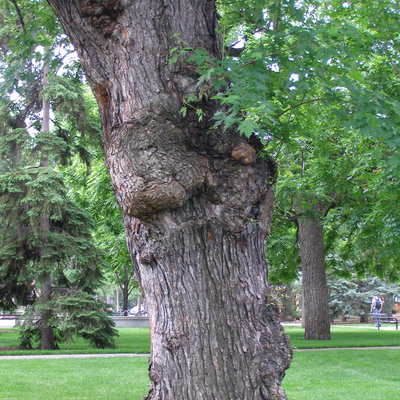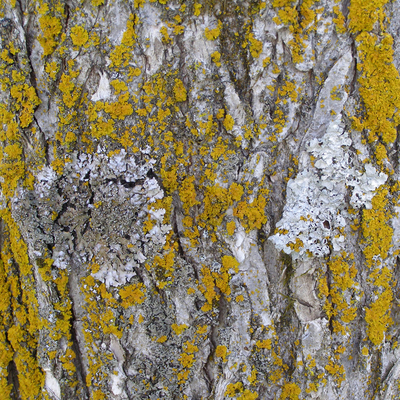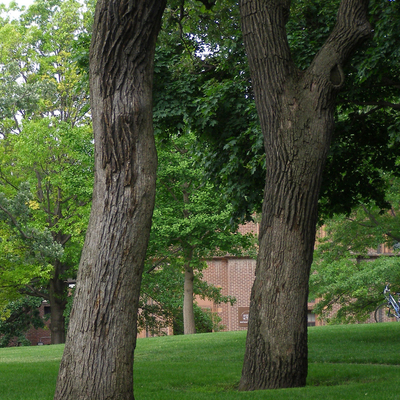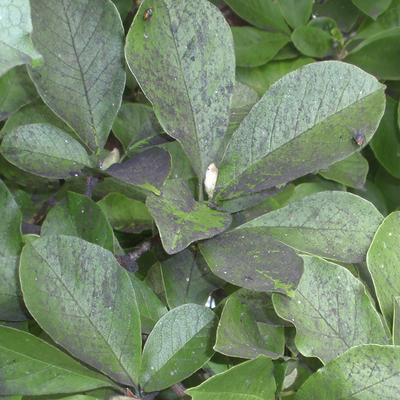Quick facts
- Some very noticeable growths and conditions on trees are not harmful to the tree and some can add interest to your landscape.
- The unusual swirling grain pattern found in burls makes them prized by woodworkers.
- Lichens in your yard are a sign that the air surrounding the tree or shrub must be clean, since lichens will not grow in polluted areas.
- The fungi that cause smooth patch do not invade the living portion of the tree and are not harmful to the health of the tree.
- The presence of sooty mold can indicate insect activity that has the potential for causing damage.
- Avoid wetwood by protecting trees from wounds by lawn mowers, weed whips and other equipment and use proper pruning techniques.
Burls
Burls are round to irregular bumps or bulges that develop on tree trunks. Their exact cause is something of a mystery. Some suggest that burls form in response to insect damage, a pathogen, or at a wound but there has been no proven cause. Some burls seem to develop from a proliferation of bud tissue that keeps multiplying instead of developing shoots.
Burls continue to grow as the tree grows. While burls do not kill trees directly they can reduce a tree's health and lifespan.
The unusual swirling grain pattern found in burls makes them prized by woodworkers. Entire burls can be carved into bowls or art objects, and thin veneers of highly patterned burlwood are used on musical instruments such as guitars.
Lichens
Lichens are a combination of a fungus with an algae or bacterium. They can be found on any non-moving substrate like rocks or woody plants.
- Lichens are commonly found on the bark of trees and shrubs in Minnesota.
- In some cases trunks and branches may be completely covered by lichens.
- This colorful coating does no harm to the plants.
- Lichens are completely self supporting organisms.
- The algae component provides sugars through photosynthesis.
- The fungus component gets water and minerals from the air, water or surrounding environment.
- Neither organism is parasitic to the tree.
Colors of lichens vary widely and include white, gray, red, green, yellow and black. The same wide variation is seen in shapes and sizes. Some lichens adhere to bark or rocks in a roughly circular flat crust, while others form raised lobes or branches.
Lichens reproduce when small pieces containing both organisms breaks off. These fragments can be carried by wind or water to a new location.
No management is necessary or should be done to reduce the presence of lichens on a tree or shrub. In fact, finding lichens on a tree or shrub in your yard is a sign that the air surrounding the tree or shrub must be clean, since lichens will not grow in areas with a smoky or polluted environment.
Smooth patch
Smooth patch is a condition in which the rough outer layer of bark is decomposed or sloughs off in response to colonization by a fungus.
- Trees with smooth patch have areas of smooth, light colored bark that are sunken in compared to surrounding bark.
- Patches may form clear oval to circular depressions in the bark or may grow together resulting in larger irregular areas of smooth bark along the trunk and branches.
- In Minnesota, smooth patch is commonly found on white oak trees, but maple, ash, willow, linden and other trees may be affected as well.
- The fungi Aleurodiscus spp. and Dendrothele spp. cause smooth patch.
- These fungi do not invade the living portion of the tree and therefore are not harmful to the health of the tree.
- Fruiting bodies of Aleurodiscus oaksii, the common fungus causing smooth patch on white oaks, are small (1/8 to ¼ inch) cream colored discs that are noticeable in wet weather but may shrivel up in dry weather.
Sooty mold
Frequently, tree limbs and leaves are covered by an unsightly, black, sooty growth called sooty mold. It may occur on any tree, shrub, or leafy plant.
Sooty mold is often found on or below plants infested with certain types of sap sucking insects, especially aphids and soft scales, which produce a sugary secretion called honeydew. This honeydew drips down onto leaves and branches providing a food base on which the sooty mold fungi can grow.
- Sooty mold is caused by saprophytic fungi.
- It is not a disease and does not infect living plant tissue.
- Heavy growth by the fungus can reduce photosynthesis but does not harm the plant in any other way.
- Sooty mold may also grow on sap or resin associated with wounds.
We do not recommend control of the mold itself. However, the presence of sooty mold is often an indication of insect activity that has the potential for causing damage. Proper identification of the insect is necessary to determine if management is warranted.
Light coverings of the mold will gradually disappear during dry weather when its nutrient source is eliminated. Sooty mold can be physically washed off small plants if desired.
Wetwood
- Wetwood causes discoloration of bark, sapwood and heartwood of many different tree species.
- Wetwood occurs when the wood of a live tree becomes water soaked and colonized by bacteria.
- In warm summer months, pressure builds in the affected wood and a foul smelling liquid, known as slime flux, is pushed out of the tree through cracks or wounds.
- As this liquid flows down the trunk, bark becomes initially stained dark black but eventually fades to a bleached tan or gray.
- Grass below the tree may be killed by the salts, alcohols and acids present in the liquid.
In Minnesota, wetwood can be seen frequently on elm and poplar and also on fir, maple, mulberry, oak, willow and hemlock. Even though the symptoms of this condition may seem unpleasant, the health of the tree is typically not affected.
Bacteria initially enter the tree through wounds on roots, trunks or branches. Protect trees from wounds by lawn mowers, weed whips and other equipment and use proper pruning techniques. Once a tree is affected by wetwood, there is no way to eliminate it.
Reviewed in 2024






